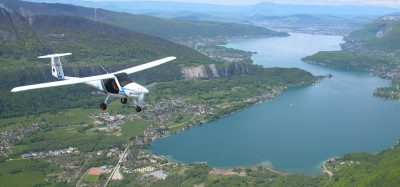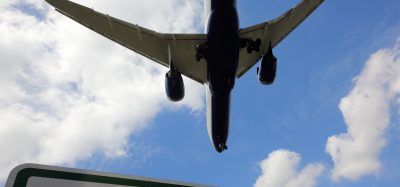Revolutionary airspace modernisation strategy finally implemented in the UK
Posted: 28 March 2023 | International Airport Review | No comments yet
Following four years of development, the UK’s Systemisation and Free Route Airspace (FRA) has been implemented over Wales and southwest England. The implementation of the system is part of wider plans to deliver a more sustainable aviation future.


The west airspace across the UK has been revolutionised with the implementation of FRA.
Following four years of development, the UK’s Systemisation and Free Route Airspace (FRA) has been implemented over Wales and southwest England. The implementation of the system is part of wider plans to deliver a more sustainable aviation future.
In a first for the UK, Systemisation and Free Route Airspace (FRA) were deployed simultaneously last Thursday, 23 March to transform a third of the UK’s airspace infrastructure. One of the most technical and complex projects ever undertaken by National Air Traffic Services (NATS), the West Airspace Deployment (West) forms an important part of the industry’s roadmap to deliver a more sustainable future for air travel and supports the UK government’s Airspace Modernisation Strategy.
The change was welcomed by the Aviation Minister, Baroness Vere of Norbiton, who said: “Revolutionising how we use our airspace is vital to decarbonising aviation. NATS’ West Airspace Deployment is helping us to save emissions and take us a step further towards Jet Zero. For this reason it is vital we continue our ambitious airspace modernisation plans across the UK.”
Spanning 54,000 square nautical miles and including some of the busiest routes for international flights to and from major UK airports, West delivers valuable benefits for all users of the airspace. It includes the latest of nine airspace change projects NATS has implemented in the last two years to modernise and improve the efficiency of the UK’s network. Combined, these are already enabling savings of nearly 60,000 tonnes of CO2 a year. That’s equivalent to the annual emissions of more than 17,000 family homes (about the number of homes in the county of Rutland). Airspace modernisation is the industry’s largest contributor to the Jet Zero target over the next decade before new fuels and engines are commercially available.
Systemisation has been implemented above 7,000ft to 24,500ft and is the first large-scale introduction of a systemised network in the UK. No changes have been made to the airspace below 7,000ft. By using the latest aircraft technology and approach to airspace design thinking, a systemised network has highly defined flight paths which use the available airspace as efficiently as possible. To design systemised routes, we have introduced Performance Based Navigation (PBN) which uses satellite technology on modern aircraft, allowing them to fly on precise flight paths from take off until they reach the higher-level network. This means airlines and airports will experience greater predictability for their operations while the potential for delay will be reduced.
provider: vimeo
url: https://vimeo.com/811322091/7b724e5227
src: https://player.vimeo.com/video/811322091?dnt=1&app_id=122963
src mod: https://player.vimeo.com/video/811322091
src gen: https://player.vimeo.com/video/811322091?h=7b724e5227
West simultaneously deployed the second tranche of FRA in the UK following the first deployment over Scotland in 2021. Covering the high-level network above 24,500ft, FRA removes the airspace structures to allow aircraft to fly their preferred route between a defined entry and exit point. Airlines have the freedom to plan and fly their optimal route to help reduce fuel burn, flight time and CO2 emissions.
Juliet Kennedy, Operations Director at NATS said: “We are delighted to have safely implemented West and deliver a simpler, more sustainable future for all airspace users. This section of airspace supports over 1,000 flights a day, so these changes will help the wider aviation industry deliver on their environmental commitments.
“After more than four years of planning, we are incredibly proud to have accomplished this milestone and look forward to continuing the modernisation of the UK’s airspace.”
The West airspace changes will enable the following projected benefits:
- 12,000 tonnes of CO2 reduced per year within UK airspace
- Savings equivalent to the annual emissions of 3,500 family homes
- Two hours cumulative reduction in flying time per day for aircraft using West airspace xz
- 150,000 nautical miles of flying saved per year for aircraft using West airspace – equivalent to seven trips around the world
NATS provides aerodrome, data, engineering, capacity, efficiency and environmental performance solutions to customers worldwide, including airports, airlines, air traffic service providers and governments. NATS handled 1.29 million flights in the last UK’s financial year (2021/22), 50% of pre-pandemic traffic levels.
For more information visit the NATS website at www.nats.aero.
Join our free webinar: Beyond silos: How ecosystem thinking elevates the airport experience
In today’s complex aviation landscape, airports are moving beyond siloed operations to embrace a new era of collaboration. This webinar focuses on how leading airports are using ecosystem thinking to adapt, personalize, and continuously improve every touchpoint, boosting both passenger satisfaction and non-aeronautical revenue.
Date: 13 Nov | Time: 10:00 GMT
REGISTER NOW TO SECURE YOUR SPOT
Can’t attend live? No worries – register to receive the recording post-event.
Related topics
Air traffic control/management (ATC/ATM), Airspace modernisation, Social responsibility, Sustainability

















